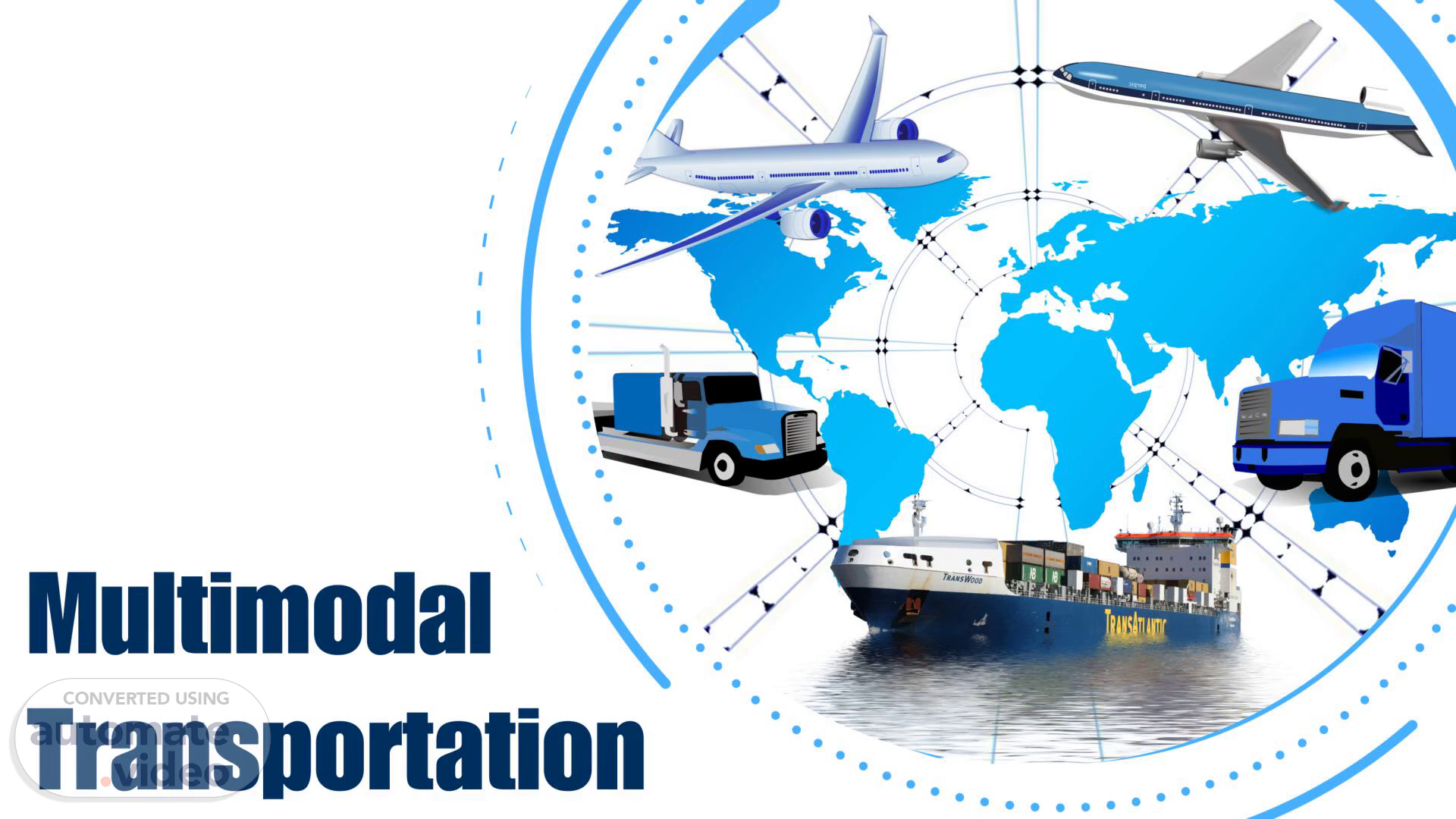Scene 1 (0s)
[Audio] Multimodal transportation is a vital component in facilitating the exchange of information across various networks, enabling real-time communication, entertainment, and education. We will delve into the importance of multimodal transportation and its effects on our daily lives. To start, let us define the concept of multimodal transportation..
Scene 3 (26s)
[Audio] Multimodal transportation is a coordinated journey that uses multiple modes of transport, such as trucks, trains, ships, and planes, to move goods or people from one place to another. Each mode is used strategically for specific parts of the journey, allowing for greater efficiency and cost-effectiveness. For example, goods may be shipped overseas, transferred to rail for inland travel, and then delivered by truck for the last mile. This approach optimizes the strengths of each transport mode, leading to faster delivery times, reduced congestion, and lower emissions. Multimodal transportation is widely used in global logistics and urban planning, helping to create sustainable and flexible transportation networks that meet modern demands while minimizing environmental impact..
Scene 4 (1m 14s)
[Audio] Multimodal transportation plays a crucial role in enhancing efficiency. By combining different modes of transportation, such as road, rail, and sea, it enables the fast and reliable movement of goods and people. This results in reduced transit times, lower costs, and increased productivity. Furthermore, multimodal transportation allows for better resource allocation, reducing waste and minimizing environmental impacts..
Scene 5 (1m 43s)
[Audio] By using multiple modes of transportation, we can optimize routes, reducing overall transit time and improving delivery schedules. This approach also enables us to choose the most economical mode for each leg of the journey, resulting in cost savings. Furthermore, combining different modes, such as rail or sea for long distances and trucks for local delivery, reduces fuel consumption and emissions, supporting sustainability goals. Additionally, multi-modal systems provide alternatives in case of disruptions, such as weather or traffic, making them more resilient and adaptable..
Scene 6 (2m 20s)
[Audio] Optimizing transportation routes and using different modes can significantly reduce urban congestion. By combining various forms of transportation, such as road, rail, and sea, cities can experience improved traffic flow. This is achieved through the reduction of vehicles on the roads, thereby decreasing congestion and related issues like air pollution and noise pollution..
Scene 7 (2m 45s)
[Audio] Multimodal transportation is a strategy that involves using different modes of transportation, such as road, rail, and sea, to create a more efficient, cost-effective, and environmentally friendly logistics system. By utilizing the strengths of each mode, this approach allows for faster and more reliable movement of goods and people, and can easily adapt to changing demands. The key benefits of multimodal transportation include reducing costs and increasing efficiency, having a positive impact on the environment, ensuring more reliable and timely delivery of goods and people, and enhancing the overall efficiency of supply chain operations..
